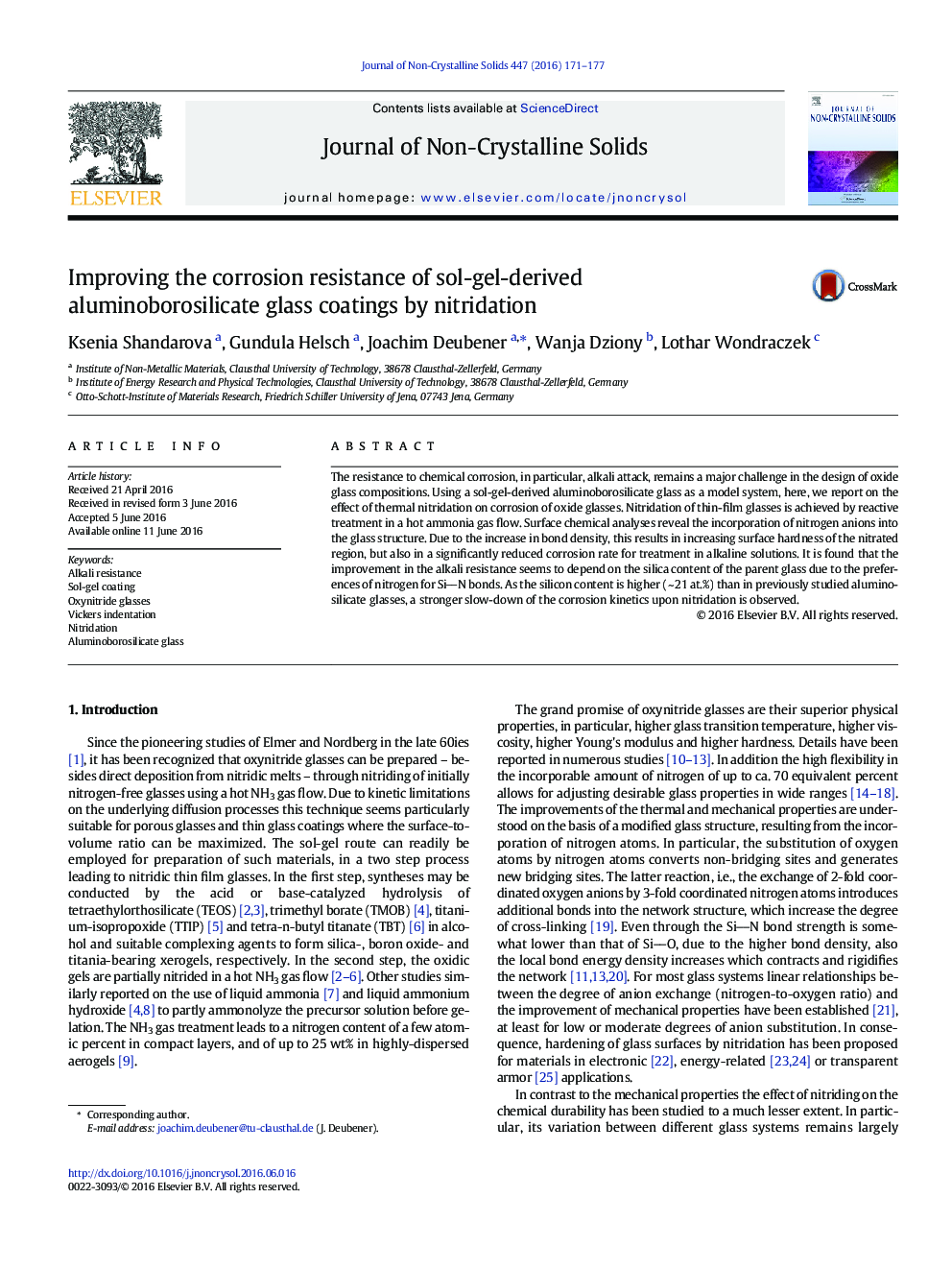| Article ID | Journal | Published Year | Pages | File Type |
|---|---|---|---|---|
| 1480161 | Journal of Non-Crystalline Solids | 2016 | 7 Pages |
•Sol-gel derived aluminoborosilicate glass coatings are nitrided in a hot ammonia gas flow.•Surface hardness of the nitrated region is increased.•Corrosion rate for treatment in alkaline solutions is significantly reduced.•Higher silicon content causes stronger slow-down of the corrosion kinetics upon nitridation.
The resistance to chemical corrosion, in particular, alkali attack, remains a major challenge in the design of oxide glass compositions. Using a sol-gel-derived aluminoborosilicate glass as a model system, here, we report on the effect of thermal nitridation on corrosion of oxide glasses. Nitridation of thin-film glasses is achieved by reactive treatment in a hot ammonia gas flow. Surface chemical analyses reveal the incorporation of nitrogen anions into the glass structure. Due to the increase in bond density, this results in increasing surface hardness of the nitrated region, but also in a significantly reduced corrosion rate for treatment in alkaline solutions. It is found that the improvement in the alkali resistance seems to depend on the silica content of the parent glass due to the preferences of nitrogen for SiN bonds. As the silicon content is higher (~ 21 at.%) than in previously studied aluminosilicate glasses, a stronger slow-down of the corrosion kinetics upon nitridation is observed.
